Heterogeneous pericoerulear neurons tune arousal and exploratory behaviours
- PMID: 40335695
- PMCID: PMC12240712
- DOI: 10.1038/s41586-025-08952-w
Heterogeneous pericoerulear neurons tune arousal and exploratory behaviours
Abstract
As the primary source of noradrenaline in the brain, the locus coeruleus (LC) regulates arousal, avoidance and stress responses1,2. However, how local neuromodulatory inputs control LC function remains unresolved. Here we identify a population of transcriptionally, spatially and functionally diverse GABAergic (γ-aminobutyric acid-producing) neurons in the LC dendritic field that receive distant inputs and modulate modes of LC firing to control global arousal levels and arousal-related processing and behaviours. We define peri-LC anatomy using viral tracing and combine single-cell RNA sequencing with spatial transcriptomics to molecularly define both LC noradrenaline-producing and peri-LC cell types. We identify several neuronal cell types that underlie peri-LC functional diversity using a series of complementary neural circuit approaches in behaving mice. Our findings indicate that LC and peri-LC neurons are transcriptionally, functionally and anatomically heterogenous neuronal populations that modulate arousal and avoidance states. Defining the molecular, cellular and functional diversity of the LC and peri-LC provides a roadmap for understanding the neurobiological basis of arousal, motivation and neuropsychiatric disorders.
© 2025. The Author(s), under exclusive licence to Springer Nature Limited.
Conflict of interest statement
Competing interests: Two patents on polony gel stamping and Pixel-seq have been filed by the University of Washington and TopoGene Inc. L. Gu and L.S. are co-founders of TopoGene, which manufactures polony gels used in our approaches herein. The other authors declare no competing interests.
Figures


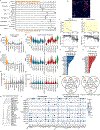

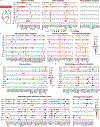
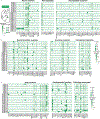
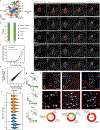



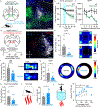



References
Main references:
-
- Uematsu A et al. Modular organization of the brainstem noradrenaline system coordinates opposing learning states. Nat. Neurosci. 20, 1602–1611 (2017). - PubMed
-
- Seo D & Bruchas MR Polymorphic computation in locus coeruleus networks. Nat. Neurosci. 20, 1517–1519 (2017). - PubMed
-
- Loughlin SE, Foote SL & Grzanna R Efferent projections of nucleus locus coeruleus: morphologic subpopulations have different efferent targets. Neuroscience 18, 307–319 (1986). - PubMed
Methods references:
-
- Feng J et al. Monitoring Norepinephrine Release in Vivo Using next-Generation GRAB NE Sensors. http://biorxiv.org/lookup/doi/10.1101/2023.06.22.546075 (2023) doi: 10.1101/2023.06.22.546075. - DOI - DOI
-
- Fraklin KBJ & Paxinos. The Mouse Brain in Stereotaxic Coordinates Third Edition. (Academic Press, New York, NY, 2007).
MeSH terms
Substances
Grants and funding
- T32 GM008151/GM/NIGMS NIH HHS/United States
- R33 DA051489/DA/NIDA NIH HHS/United States
- R00 DA045662/DA/NIDA NIH HHS/United States
- UG3 CA268096/CA/NCI NIH HHS/United States
- T32 DA007278/DA/NIDA NIH HHS/United States
- K99 DA053336/DA/NIDA NIH HHS/United States
- R41 MH130299/MH/NIMH NIH HHS/United States
- UG3 DA053802/DA/NIDA NIH HHS/United States
- R61 DA051489/DA/NIDA NIH HHS/United States
- R25 DA057786/DA/NIDA NIH HHS/United States
- F31 MH122033/MH/NIMH NIH HHS/United States
- R01 DA038168/DA/NIDA NIH HHS/United States
- R37 DA032750/DA/NIDA NIH HHS/United States
- F31 MH136670/MH/NIMH NIH HHS/United States
- P30 DA048736/DA/NIDA NIH HHS/United States
- R01 MH112355/MH/NIMH NIH HHS/United States
- R01 DA035821/DA/NIDA NIH HHS/United States
- F31 MH117931/MH/NIMH NIH HHS/United States
- R01 DA054317/DA/NIDA NIH HHS/United States
- R21 MH123085/MH/NIMH NIH HHS/United States
LinkOut - more resources
Full Text Sources
Molecular Biology Databases
Research Materials

